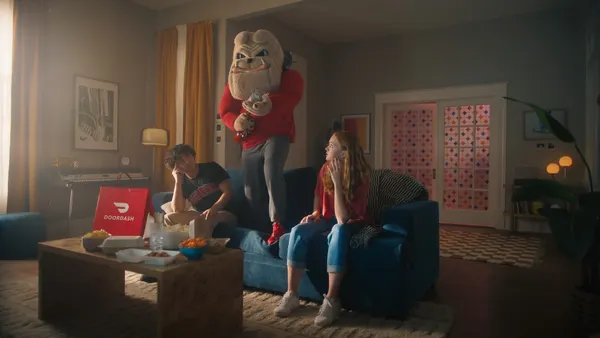Dive Brief:
- IKEA Canada has built a VR installation at a Toronto storefront that allows customers to interact with a virtual kitchen, according to a company press release. The VR showroom, which launched Tuesday, will be open until May 21. IKEA intends to install similar demo spaces in Sweden and Belgium.
- The VR content lets customers do things like flip virtual pancakes or use a "kitchen visualizer," which is an enhanced version of the IKEA Home Planner available in stores and on the company's website. HTC Vive headsets power the experience.
- "IKEA strives to be an innovative company and is exploring virtual reality as a tool to better meet with our customers. We know that this technology is developing fast and will play a major role in the future for our customers," said Rob Kelly, head of sales at IKEA Canada, in a statement. "Through this test, we want to learn if virtual reality experiences will help our customers to visualize their dreams and make informed choices when buying a kitchen."
Dive Insight:
Virtual reality is entering a bit of a nebulous period following a lot of hype built up on the tail end of last year. In October, Best Buy expanded its Oculus VR headset testing stations from 48 to 500 but, early in February, it shuttered 200 of those outlets, citing "seasonal changes." Yes Lifecycle Marketing also recently found that only 8% of surveyed marketers are currently using VR and another 35% said they have no intention to.
The IKEA virtual kitchen, however, highlights how the immersive tech still might hold significant value for retailers and other brands focused heavily on brick-and-mortar, allowing visualizations of things like kitchen configurations that aren't actually there. Activities like flipping pancakes might also be a fun hook to engage visitors who aren't necessarily interested in buying kitchen appliances.
Most brands are creating VR content that people can access via their own hardware such as smartphone-powered headsets, but these are frequently "light" versions of the technology that simply use 360-degree video to enhance viewing experiences. In IKEA's case, it is providing in-store visitors a more concrete interaction and tangible demonstration of product, making for a merchandising-driven use of VR that goes beyond marketing messaging.
Product demos, especially for large, considered B2B sales, have long been seen as a natural fit for VR tech, along with applications that are best experienced in 3-D such as architecture renderings. Home planning and remodeling are their own sort of offshoot of architectural renderings and stand in an area where VR tech might shine.












